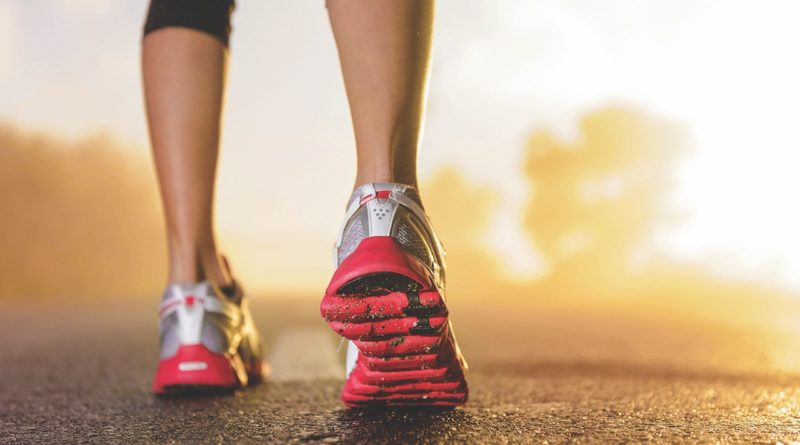Is It Dangerous To Work Out When It’s This Hot?
Is it dangerous to work out in the heat? Dr. Nate Endres of University of Vermont Medical Center explains:
Here in Vermont, we’re used to cool weather which means that once the mercury starts to rise, working out can seem more like a chore. Worse, it can make you sick— heat-related illness can be a major issue for athletes. Consequences range from decreased performance to death. In fact, heat stroke is the third leading cause of death in athletes after cardiac disorders and cervical spine trauma.
During any exercise, our bodies produce heat, mainly in the muscles. That heat needs to be released, or the body’s temperature will rise. The quickest way we lose heat is through evaporation and sweating, which is why wind, temperature and humidity affect how quickly we can cool off. Clothing also has an effect, as do body mass and amount of body fat.
Prolonged, vigorous exercise on a still, hot and humid day can be a recipe for a variety of heat illnesses, ranging from minor to severe.
At the minor end of the scale is heat edema, a swelling in the legs that can improve with simple elevation and rest. Heat cramps are also common during or after exercise and the treatment here is rest, stretching and hydration, especially with a beverage containing electrolytes (sodium).
 If it’s hot and you are dehydrated your blood pressure may slow, making you prone to heat syncope, or fainting. If this happens, lie flat, elevate your legs and drink lots of fluids.
If it’s hot and you are dehydrated your blood pressure may slow, making you prone to heat syncope, or fainting. If this happens, lie flat, elevate your legs and drink lots of fluids.
Much more serious is heat exhaustion. While many of us can feel exhausted when it’s hot out, true heat exhaustion is characterized by an inability to continue exercise. An athlete suffering this may or may not collapse. Symptoms include fatigue, dizziness, heavy sweating, nausea/vomiting, headache, chills and irritability.
If this happens, make sure the core temperature is less than 104° F and there are no central nervous system changes present. In this instance, temperature is most accurately measured by rectal thermometer. Make sure the athlete stops all activity. Transfer him or her to as cool a location as possible, remove of excess clothing, elevate the legs and start rehydration. If the athlete’s condition worsens and/or temperature does not decrease with proper treatment, seek emergency medical attention.
If someone shows signs of heat exhaustion, you want to make sure they are not suffering heat stroke. This is the most serious form of heat illness and can lead to death if not recognized and treated right away. The difference compared to heat exhaustion is that core body temperature is greater than 104° F and central nervous system changes such as delirium or convulsions are present. The skin may be dry or soaked with sweat. Risk factors include obesity, low fitness level, lack of heat acclimatization, dehydration, history of heat illness, and loss of sleep. Certain medications like diuretics and stimulants can also bring this on.
Heat stroke most commonly happens early in the season during the first few practices and can worsen from day to day. Treatment is rapid whole body cooling, preferably in an ice bath. Water-soaked towels and fanning also works, but not as well. Once stable, an athlete suspected of or diagnosed with heat stroke should always be taken to an emergency facility.
The key to heat illness is awareness and prevention. Acclimatize to the conditions; especially if your fitness level is low or you are traveling to a race in a warmer climate. Don’t ride or run aggressively in hot weather if you’re not used to it or not in shape. This process of acclimatization can take 7 to 14 days.
Drink lots of fluids, especially sports drinks so you can maintain good hydration and electrolyte replacement. Be prepared especially on hot and humid days and get adequate sleep before a vigorous race or workout.
If you take medications, be aware of what effect they may have on fluid loss and hydration. Be aware that certain medical conditions (obesity, diabetes, history of concussion) are risk factors for heat illness.
Lastly, be aware of the outside temperature and humidity and dress accordingly and check out: 4 Deceptively Simple Ways to Stay Hydrated
Dr. Nathan Endres, is an orthopaedic surgeon at UVM Medical Center and an assistant professor at the University of Vermont College of Medicine. He specializes in sports medicine and sports-related trauma around the knee and shoulder. He treats many athletes and the athletically-minded in his practice. He is an avid alpine skier and member of the US Ski Team Physician Pool.

